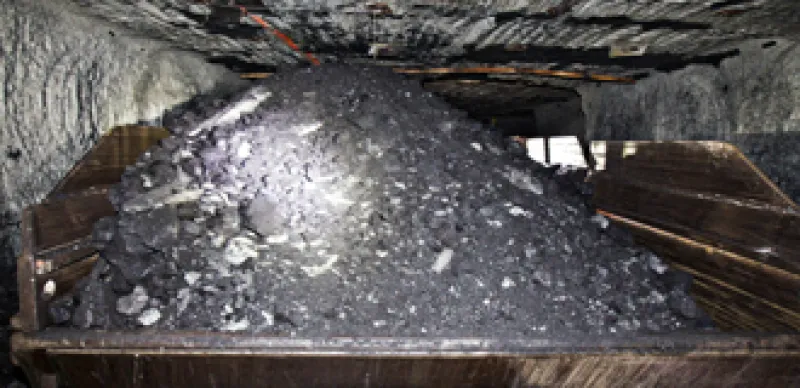Timothy Parker, manager of the T. Rowe Price New Era Fund, spoke last week about the outlook for energy commodities: oil, gas, coal, solar and wind. His capital appreciation fund, with $4.8 billion in assets, invests in natural resources and commodities. About 60 percent of the portfolio is in energy (mostly oil), 15 to 20 percent in metals, 4 to 5 percent in agriculture, and the rest assorted commodities such as forest products and chemicals.
INSTITUTIONAL INVESTOR: Is this a good time to invest in energy?
PARKER: You had a pretty rough first part of the year. Macondo [the Gulf of Mexico oil well run by BP] put a big kibosh on anything offshore and made people very scared of energy. There was talk of the Chinese trying to control price increases, discouraging speculation, and in Australia there was talk of increasing the tax on resources.
And now?
I’m rather sanguine. You’ve seen a big surge in natural resources since the middle of the year. China didn’t blow up; property speculation slowed down. The prime minister [Kevin Rudd] was forced out of office in Australia and they ironed out a compromise for a much more moderate increase [ranging from 30 to 40 percent]. We’ve capped Macondo. If you look at resources stocks over the last four months, it’s been a great run. Part of it is a relief rally from the headwinds, plus the growing realization that there’s greater tightness in commodities looking out.
Will drilling go back to earlier levels? Aren’t there still safety issues?
Maybe three-fourths the level of pre-Macondo. It will still be significant levels. It’s a big part of the Gulf Coast economy.
There’s been so much talk about alternative energy. Are there really investment opportunities?
We do have modest investments where the valuation is compelling and there are subsidies. Once in a while you’re getting alternative energy starting to behave like more mature companies.
What’s the best example of that?
Solar was being the bees’ knees in 2007-08. There was a lot of competition, particularly in China, to build more photovoltaic capacity. So you build a lot of PV supply [that comes online] in 2009 and 2010 just as demand drops in the global recession. That dragged down one company we own, First Solar [Nasdaq: FSLR, which makes thin-film photovoltaic cells].
Sorry to hear that.
That’s when I want to buy -- prices are down, stocks are down. It takes two years to build a new PV plant. In 2010 they’re not building many at all. In the next two years the world will absorb the supply, and you don’t have new capacity on the horizon.
But will demand be there in two years?
There’s no reason to think demand is going to be gangbusters, but there are many regulatory regimes that treat alternative power pretty favorably. California is one. They just rejected Proposition 23 [which would have effectively repealed a state law reducing greenhouse-gas emissions].
You haven’t talked about wind power.
The Chinese have taken over that market and made it difficult to earn an economic return.
Or nuclear?
We look at it from the commodity side, so we don’t invest in nuclear plants. And as a commodity, I don’t find uranium to be structurally undersupplied.
I suppose you could look at clean coal as “green” energy, too. What’s the outlook for that?
I’m not near-term optimistic. You need some sort of subsidy, and we haven’t had much of a political will so far. I hope we do find the political will.
Of course we can’t ignore traditional energy sources. What’s happening there?
I’m rather sanguine on coal. Inventories at the utility level are coming down nicely. Also, China and India provide a good demand story.
How about gas?
I’m not as sanguine on domestic natural gas but talk to me in a year and I could feel differently. There is oversupply at the moment, but the beauty of natural gas is that [supply] declines quickly.
Will we Americans ever learn to use less energy?
When the price is high enough, we will. Power prices need to be 50 to 100 percent higher. We could see that in three, four, five years time.
How does that happen? Through taxes?
A combination of things, but it’s often tight commodities plus taxes. Any new tax gets passed on to the consumer and drives prices higher in the long term. The developed world has to use less oil to make room for the rest of the world, and the non-OPEC oil supply is not growing fast enough.
So prices go up, no matter what?
The beauty of most commodities is that it’s harder to get the next whatever out of the ground.
Fran Hawthorne is the author of the award-winning “Pension Dumping: The Reasons, the Wreckage, the Stakes for Wall Street” (Bloomberg Press) and “Inside the FDA: The Business and Politics behind the Drugs We Take and the Food We Eat” (John Wiley & Sons). She writes regularly about finance, health care, and business ethics.






